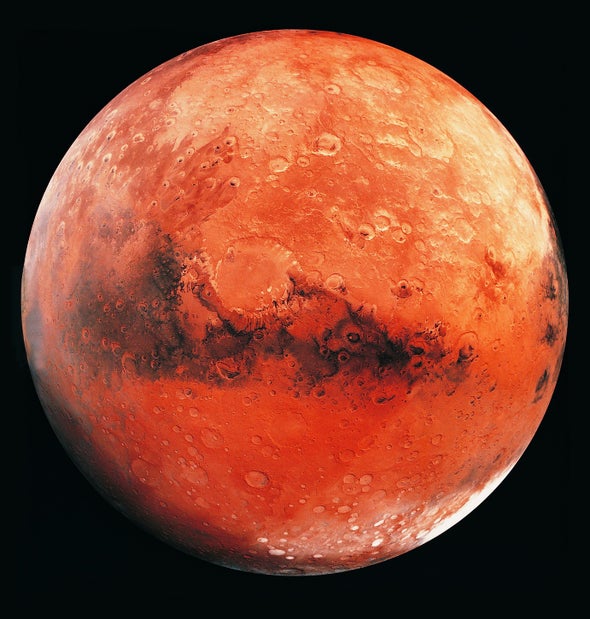Mars, also known as the Red Planet, has captivated the human imagination for centuries. It is the fourth planet from the sun and is often called the "sister planet" of Earth due to its similar characteristics. Mars is a rocky planet with a thin atmosphere, polar ice caps, and an intriguing history that scientists are still trying to unravel. In this blog post, we'll explore everything you need to know about Mars, including its history, geology, atmosphere, and potential for future exploration.
 |
| Exploring the Red Planet: Everything You Need to Know About Mars |
History of Mars
Mars has been observed by humans for thousands of years and was named after the Roman god of war due to its reddish appearance. In the late 19th and early 20th centuries, astronomers began studying Mars in greater detail using telescopes. In the 1960s and 1970s, several spacecraft were sent to Mars by both the US and the Soviet Union, providing the first close-up images and data on the planet. In recent years, a number of Mars missions have been launched, including the Mars rovers, which have explored the planet's surface and gathered data about its geology and atmosphere.
Geology of Mars
Mars is a rocky planet with a solid surface that is heavily cratered, much like the Moon. However, it also has several unique features, including the largest volcano in the solar system, Olympus Mons, and the longest canyon in the solar system, Valles Marineris. Mars also has polar ice caps made of frozen carbon dioxide and water, and some evidence suggests that liquid water may exist beneath the planet's surface. One of the most interesting geological features of Mars is the possibility of past or present subsurface life. In 2018, a team of Italian scientists reported the discovery of a subglacial lake on Mars, providing the first evidence of liquid water on the planet's surface. This discovery raised the possibility of microbial life on the Red Planet.
The Atmosphere of Mars
Mars has a thin atmosphere composed mainly of carbon dioxide, with traces of nitrogen and argon. The planet's atmosphere is not dense enough to support human life, and its lack of a protective magnetic field means that it is bombarded by harmful solar radiation. However, the atmosphere is thick enough to create weather patterns, including dust storms that can cover the entire planet. In fact, Mars is known for its planet-wide dust storms, which can last for weeks or even months.
Potential for Future Exploration
Mars has long been a target for exploration, and several missions are currently planned or underway. NASA's Mars 2020 mission, which includes the Perseverance rover and the Ingenuity helicopter, is currently exploring the planet's Jezero Crater in search of signs of ancient microbial life. The mission also aims to collect rock and soil samples that will be returned to Earth by future missions. SpaceX, the private space exploration company founded by Elon Musk, has also announced plans to send humans to Mars as early as 2024. The company is currently developing a new spacecraft, called Starship, which is designed to transport humans and cargo to Mars and other destinations in the solar system.
Conclusion
Mars is a fascinating planet that has captured the imagination of scientists and the public alike. Its history, geology, and atmosphere provide important clues about the evolution of our solar system, and its potential for future exploration offers exciting possibilities for discovering new information and perhaps even finding evidence of life beyond Earth. As we continue to explore Mars, we may unlock new insights into the mysteries of our universe. With the launch of new missions, the development of new technologies, and the increasing interest in space exploration, the future of Mars exploration is looking brighter than ever before. Who knows what discoveries await us on the Red Planet?
Additional Information on Mars
- Mars is the fourth planet from the sun and is located between Earth and Jupiter.
- The planet is named after the Roman god of war due to its reddish appearance in the night sky.
- Mars has a thin atmosphere composed mainly of carbon dioxide, with traces of nitrogen and argon.
- The planet has two small moons, Phobos and Deimos, which are thought to be captured asteroids.
- Mars is known for its planet-wide dust storms, which can last for weeks or even months.
- The largest volcano in the solar system, Olympus Mons, is located on Mars and is three times the height of Mount Everest.
- The longest canyon in the solar system, Valles Marineris, is also located on Mars and is over 4,000 km long.
- Mars has a day length that is similar to Earth's, with a day lasting just over 24 hours.
- The planet has a colder average temperature than Earth, with temperatures ranging from -143°C to 35°C.
- The Mars rovers, including Curiosity and Perseverance, have been instrumental in exploring the planet's surface and gathering data about its geology and atmosphere.
- In addition to NASA and SpaceX, other countries and organizations are also planning Mars missions, including the European Space Agency and the China National Space Administration.


0 Comments